Forschung/Aktivitäten
Unser Ziel ist es, klimatologische und ökoklimatologische Muster und Prozesse zu verstehen und zu quantifizieren. Der Schwerpunkt unserer Forschung liegt auf der Analyse klimatischer, ökoklimatologischer und umweltbezogener Muster, ihrer Interdependenzen und ihrer Veränderungen auf regionaler und lokaler Ebene. Unsere Arbeitsgebiete liegen im subsaharischen Afrika, Zentralasien und Mitteleuropa.
Wir erfassen Prozesse und Ursachen mit Hilfe der Fernerkundung, einschließlich intensiver Bodenerkundung, multivariater Statistik und prädiktiver Kartierung. Von besonderem Interesse ist die Quantifizierung von ökoklimatologischen Parametern, die häufig als Grundlage für die Bewertung von Ressourcen dienen. Daher ist die Ressourcennutzung und der Einfluss des Menschen auf Muster und Veränderungen auch ein Kernthema unserer Arbeit.
Aktuelle Aktivitäten
Klimawandel und Klimaanpassung im Landkreis Forchheim
Klimaveränderungen beeinflussen das Auftreten von Dürren und Spätfrosten. Diese haben wiederum starke Auswirkungen auf die Vegetation und die landwirtschaftliche Produktion. Zusammen mit dem Institut für Geographie der FAU Erlangen-Nürnberg kooperieren wir mit dem EU-Project STRENCH des Landkreis Forchheim. ...mehr

Socio-ecological drivers of movements into and out of African Woodlands
Als Teil des Forschungsbereichs Mobilities untersucht unser Projekt die Migrationsmuster und Mobilitätsprozesse und deren Beziehungen mit Klimaveränderungen, Umweltprozessen sowie kulturellen und sozioökonomischen Faktoren. ...mehr (in Englisch)
Abgeschlossene Aktivitäten
- 2022: Workshop - Community Based Natural Resource Management Past, Present and Future(s)Einklappen
-
Workshop - Community Based Natural Resource Management Past, Present and Future(s), 3-6 April 2022 in Windhoek (Namibia), gefördert durch die VolkswagenStiftung
CBNRM wurde Ende der 1980er/Anfang der 1990er Jahre in Simbabwe und Namibia als innovatives Projekt mit dem Anspruch gegründet, Armutsbekämpfung mit dem Schutz von Natur und biologischer Vielfalt zu verbinden. Partizipative Formen der Bewirtschaftung durch lokale Bevölkerungsgruppen und die Vermarktung natürlicher Ressourcen zusammen mit mit privatwirtschfatlichen Partner kennzeichneten den Entwicklungsansatz. Der Ansatz wurde dann in anderen Regionen im südlichen Afrika übernommen und diversifiziert, um auch Ökotourismus und Trophäenjagd als zusätzliche Einkommens- und Beschäftigungsquellen einzubeziehen. CBNRM wurde allmählich zu einem Modell für die Entwicklung des ländlichen Raums und weckte das Interesse zahlreicher Wissenschaftler und Praktiker aus den verschiedensten Fachbereichen. ...mehr (in Englisch)
- 2016-2021: Projekt im PamirEinklappen
-
Ecological Calendars and Climate Change Adaptation in the Pamirs (ECCAP), gefördert durch DFG/Belmont Forum
Die Bevölkerung in Hochgebirgen hat am wenigsten zum Anstieg der Treibhausgaskonzentrationen beitragen, ist aber in besonderem Maß von den Auswirkungen der zunehmenden Klimakrise konfrontiert. Die Anpassung an eine "neue Normalität" ist eine Notwendigkeit, und diese Gemeinden müssen sich auf ein breiteres Spektrum möglicher Auswirkungen vorbereiten. Die Bevölkerungsgruppen müssen ihre Fähigkeit zur Klimaanpassung stärken, um ihre Nahrungsmittelproduktion an die zunehmend unbeständigen Wettermustern anzupassen. Ökologische Kalender, die auf dem indigenen Wissen über saisonale biometeorologische Ereignisse beruhen, können genutzt werden, um Klimaschwankungen vorherzusehen und darauf zu reagieren. Im 20. Jahrhundert wurden ökologische Kalender von vielen Regierungen unterdrückt und kamen nicht mehr zum Einsatz. Jetzt bieten diese kulturell und ökologisch begründeten Kalender neue Hoffnung für die Anpassung an die Klimakrise. Unsere Forschung wird durch die Wiederbelebung von Kalendern einen Beitrag zur Anpassungsfähigkeit der Bevölkerung im Pamir leisten. Mithilfe partizipativer Forschung werden historische und bestehende ökologische Kalender neu kalibriert, indem indigenes Wissen mit wissenschaftlichen Analysen von Klima- und phänologischen Daten verbunden werden. ...more (in Englisch)
- 2018-2021: Projekt in NordbayernEinklappen
-
Minderung Städtischer Klima- und Ozon (MiSKOR), gefördert durch die Bayerischen Staatsministerien für "Gesundheit, Pflege und Prävention" und "Umwelt und Verbraucherschutz"
Das Ziel von MiSKOR ist ein besseres Verständnis der Prozesse, die mit der Verbindung von städtischen Wärmeeffekten und Ozonkonzentrationen zusammenhängen. Dieses Verständnis soll Planungsinstrumente für eine Abschwächung der durch den Klimawandel verursachten erhöhten Risiken liefern. ...mehr
- 2017-2021: EU COST Action Drylands Facing ChangeEinklappen
-
Drylands Facing Change: Interdisciplinary Research on Climate Change, Food Insecurity, Political Instability (DFC) (2017-2021), gefördert durch EU COST (action CA16233)
Trockengebiete und ihre Bewohner stehen angesichts von Klimaschwankungen und der Klimakrise, ungünstigen Marktbedingungen und politischer Instabilität vor komplexen Herausforderungen bei der Entwicklung ihrer Wirtschaft und ihrer produktiven Agrarsysteme. Sie sind die unsichersten Gebiete der Welt und beherbergen eine große Zahl unterernährter Menschen, denen es an grundlegenden Dienstleistungen wie Bildung, Gesundheitsversorgung, Energieversorgung und Marktzugang fehlt. Viele dieser Gebiete sind von Gewalt und politischer Instabilität geprägt und verfügen über schlecht funktionierende politische Institutionen, Dadurch werden die Bewohner der Trockengebiete daran gehindert, ihren eigenen Weg zur Entwicklung zu finden. Infolgedessen versuchen viele Menschen durch Migration ihre Lebensgrundlagen zu verbessern. ...more (in Englisch)
- 2012-2015: Projekt im Ostpamir TadschikistansEinklappen
-
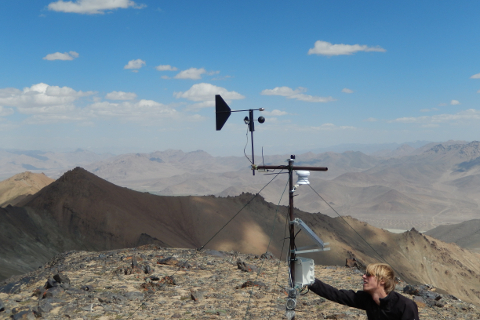
Transformation Processes in the Eastern Pamirs of Tajikistan. The presence and future of energy resources in the framework of sustainable development (2012-2015), gefördert durch VolkswagenStiftung
Die gemeinsame Forschungsarbeit zu Transformationsprozessen im Ostpamir konzentrierte sich auf die Verfügbarkeit und Nutzung lokaler Energieressourcen. Die Zusammensetzung des Projektteams ermöglicht, den Zusammenhang zwischen den geoökologischen Grundlagen für Zwergsträucher als Energiequelle und den Mustern der menschlichen Nutzung dieser Ressource herauszustellen. Zusätzlich wurde das Potenzial von Wind- und Sonnenenergie bewertet. Die Ergebnisse des Energiesystemmodells zeigen, dass Zwergsträucher unter dem Gesichtspunkt der ökologischen Nachhaltigkeit einen relevanten Anteil am Energiemix der Siedlungen im Ostpamir liefern können. Auch die Solarenergie könnte einen wesentlichen Teil des Energiemixes ausmachen. Darüber hinaus hat die Studie ein Optimierungspotenzial im beschriebenen Energiesystem aufgezeigt und könnte für die Umsetzung von Maßnahmen genutzt werden.. ...more (in Englisch)
- 2010-2014: Projekt in Mali und im SenegalEinklappen
-
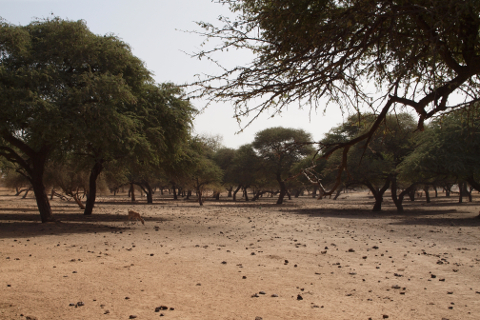
Climate Change, Environmental Changes and Migration - Social-Ecological Conditions of Population Movements: The Example of the Sahelian Countries Mali and Senegal (2010-2014), gefördert durch BMBF
Das interdisziplinäre Forschungsprojekt MICLE befasste sich mit den Zusammenhängen zwischen Umweltveränderungen und Migration in Mali und Senegal. Politiker und Wissenschaftler betonen zunehmend den Umweltwandel als eine der größten Bedrohungen für die nachhaltige Lebensgrundlage der Menschen in Afrika und sagen massive Bevölkerungsbewegungen als Reaktion auf eine wachsende Zahl von Extremereignissen wie Dürren, zunehmende Wasserknappheit, einen nachteiligen Rückgang der Nahrungsmittelproduktion, veränderte Krankheitsmuster und den Verlust der Artenvielfalt voraus. In den beiden Untersuchungsregionen konnten wir zeigen, dass ein komplexes Muster von Umweltveränderungen hauptsächlich auf menschliche Aktivitäten und nur teilweise auf Klimaschwankungen zurückzuführen ist. Nach den langen Dürreperioden in den 70er und 80er Jahren nahmen die Niederschläge zwar zu, erreichten aber nicht mehr die Mengen von vor der Dürre. Trotz der Niederschlagssituation ist in der Nähe von Siedlungen eine Begrünung zu beobachten, die durch agroforstwirtschaftliche Aktivitäten und Aufforstung verursacht wird. Die Begrünung wird hauptsächlich durch Gehölzpflanzen verursacht. Während die Zahl der Gehölze zunimmt, ist ein Rückgang der biologischen Vielfalt zu beobachten, da sich vor allem Arten ausbreiten, die gegen Trockenheit und Verbiss resistent. In größerer Entfernung von den Siedlungen findet eine Verschlechterung der ökologischen Situation durch starke Beweidung und Brennholzgewinnung statt. Da diese Prozesse in unmittelbarer Nachbarschaft zu beobachten sind, spielen Unterschiede in den Niederschlägen eine untergeordnete Rolle. Die Ergebnisse des Teilprojekts zeigen auch, dass Bewirtschaftungsstrategien Degradationsprozesse abmildern können. …more (in Englisch)
- 2007-2011: Projekt im Ostpamir TadschikistansEinklappen
-
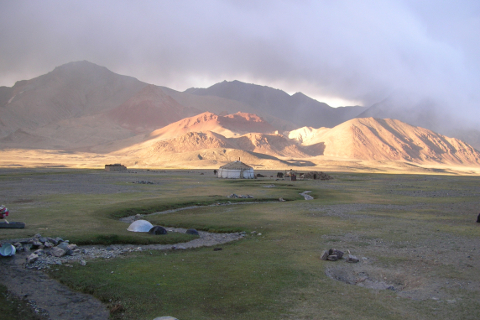
Transformation Processes in the Eastern Pamirs of Tajikistan. Changing Land Use Practices, Possible Ecological Degradation and Sustainable Development (2007-2011), gefördert durch VolkswagenStiftung
Die Erforschung der Transformationsprozesse im Ostpamir konzentrierte sich auf den pastoralen Sektor. Die Zusammensetzung des Projektteams ermöglichte es uns, den Zusammenhang geoökologischer Prozesse und menschlicher Nutzung der Weideressourcen zu bearbeiten. Auf diese Weise konnten räumliche und zeitliche Veränderungen untersucht werden. Die relevanten ökologischen und sozioökonomischen Veränderungen im 20. Jahrhundert sind eng mit sozio-politischen Veränderungen verbunden, die als zwei Transformationen bezeichnet werden können. Die umfangreichen humangeographischen und geoökologischen Feldforschungen ermöglichten einen tieferen Einblick in das komplexe System pastoraler Praktiken an der Höhengrenze der Besiedlung. So konnten die Gründe und die auslösenden Faktoren für Veränderungsprozesse erklärt werden. Mit umfangreichen Feldarbeiten zur Artenzusammensetzung der Vegetation, zur Quantifizierung der Biomasse und der Futterwerte konnte das Weidepotenzial abgeschätzt werden, das dem Management der Weidegrundlagen dienen kann. Die Kombination der Ergebnisse zeigt, dass unter den bestehenden geoökologischen Bedingungen und bei den derzeitigen Viehbeständen das Weidepotenzial ausreichend ist, wenn die gesamte Region genutzt wird. Im Einzelnen hat jedoch der Wettbewerb zwischen den Hirten zu einer erheblichen Unter- und Überweidung geführt, die auf ein Missverhältnis zwischen formalen Nutzungsrechten und Weidepraktiken zurückzuführen ist. Theorie und Praxis klaffen hier weit auseinander. In solchen Situationen kommt es häufig zu Konflikten, die die nachhaltige Nutzung natürlicher Ressourcen einschränken. Die Änderung der Beweidungsmuster könnte auf den Rechtspluralismus und die unterschiedlichen Mechanismen zur Ausübung von Macht und Druck zurückzuführen sein. Bauernvereinigungen als "offizielle" und einzige Inhaber von Landtiteln werden in Frage gestellt. Einflussreiche und wohlhabende Hirten beanspruchen gewohnheitsmäßige und ererbte Nutzungsrechte. Widersprüchliche Interessen stellen die Autorität dieser Organisationen in Frage. Die Bauernverbände solllten ihre Rechte durchsetzen und die Weiderechte entsprechend der Nachfrage und den ökologischen Erfordernissen auf der Grundlage unserer Forschungsergebnisse neu zuweisen. Wenn dies gelingt, wird die Mehrheit der Viehzüchter Zugang zu produktivem Weideland erhalten und eine Chance haben, die Produktivität ihrer Herden zu verbessern. …more (in Englisch)
- 2003-2005: Projekt im Nordwesten NamibiasEinklappen
-
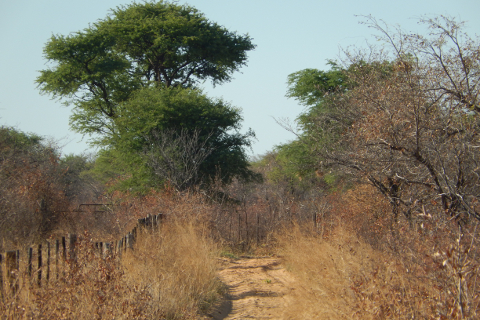
Analysis of vegetation changes with NOAA-AVHRR and MODIS data to detect degradation in northwestern Namibia (2003-2005), gefördert durch DFG
Ein früheres Projekt, das sich auf den Etosha-Nationalpark konzentrierte, und andere Projekte zeigen die Korrelation der saisonalen Schwankungen des aus multitemporalen Satellitendaten abgeleiteten Normalized Difference Vegetation Index (NDVI) mit dem saisonalen Niederschlagsgang. Die Ergebnisse des Projekts in Etosha zeigen auch, dass Standardmethoden unter bestimmten Umweltbedingungen versagen können. Entlang eines Transekts vom Osten Etoshas bis zum Skeleton-Nationalpark im Westen Namibias wurden aus Landsat-7-Bildern sechs Bewaldungsklassen abgeleitet, wobei umfangreicher Feldarbeit die Grundlage waren. Damit war es möglich, die aus AVHRR-Daten abgeleiteten Ergebnisse zu validieren. Anstelle der Fourier-Transformation wurde ein Modell entwickelt, das die saisonalen Kurven des NDVI der sechs Gehölzklassen verwendet. Mit Hilfe dieses Modells war es möglich, Gehölzklassen für das nördliche Namibia zu klassifizieren und Veränderungen der Bewaldung zu quantifizieren.. …more (in Englisch)
- 2002-2002: Projekt im Etosha Nationalpark in NamibiaEinklappen
-
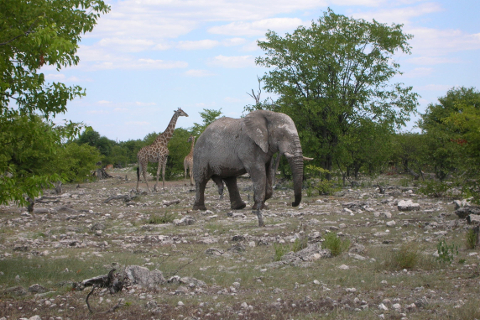
Analysis of bush encroachment with NOAA-AVHRR-data in Etosha National Park (Namibia) (2002-2002), gefördert durch DFG
Die Verbuschung wird durch Überweidung und Brandbekämpfung erklärt und findet auch in Nationalparks statt. Für den Etosha-Nationalpark sind die Vegetationsmuster gut bekannt und dokumentiert, so dass die mit Satellitendaten analysierten Veränderungen validiert und erklärt werden können. Zur Erklärung der unterschiedlichen Phänologie von Gehölz- und Krautarten wurde ein Standardverfahren verwendet, die Fourier-Transformation. Für zwei aufeinanderfolgende Regenzeiten wurde die Vegetation auf der Grundlage der Fourier-Transformation der AVHHR-Zeitreihen klassifiziert. Der Vergleich der Klassen in den beiden Jahren zeigte, dass die Methode nicht für namibische Savannen-Ökosysteme verwendet werden kann, z. B. wurden Regionen im ersten Jahr als Grasland und im folgenden Jahr als Waldsavanne klassifiziert. Eine Erklärung dafür könnten die sehr heterogenen Niederschlagsmuster in semiariden Savannenökosystemen sein, die die NDVI-Zeitreihen beeinflussen. …more (in Englisch)
- 1998-2001: Projekt im Südwesten SimbabwesEinklappen
-
Determination of the Grazing Capacity in Southeastern Zimbabwe Using Satellite Images (1998-2001), teilweise gefördert durch DFG
Die Trockenwälder im südlichen Afrika sind die größten Trockenwälder der Welt. Ein permanenter Nutzungsdruck in allen Ländern, die sich diese Wälder teilen, führt zu einer zunehmenden Ausbeutung und Degradierung. Das Untersuchungsgebiet in Simbabwe ist ein Beispiel für eine Vielzahl von Landnutzungsformen sowie für die klimatischen Veränderungen innerhalb der Miombo-Wälder. Weidenutzung ist eine der vorherrschenden Landnutzungsformen, die vor allem in den Gebieten mit kleinbäuerlicher Landwirtschaft intensiv betrieben wird. Sie ist daher ein wichtiger Faktor für die Degradation der Trockenwälder. …more (in Englisch)
